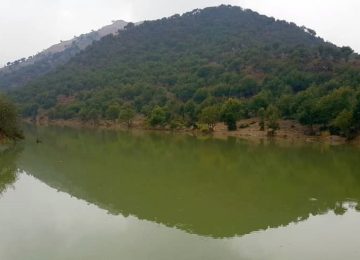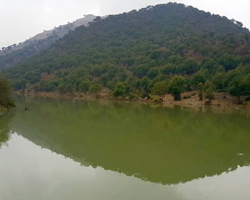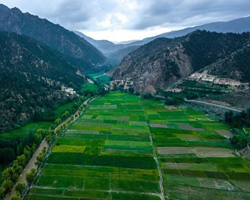Land is a naturally occurring finite resource. It provides the base for survival of living beings. It holds everything that constitutes terrestrial ecosystems. Increased demand on land in modern times due to the rise in human population and resultant activities has resulted in degradation of land quality and quantity, decline in crop production, and competition for land.
Land and Land Resources refer to a delineable area of the earth’s terrestrial surface, encompassing all attributes of the biosphere immediately above or below this surface, including those of the near-surface climate, the soil and terrain forms, the surface hydrology (including shallow lakes, rivers, marshes and swamps), the near-surface sedimentary layers and associated groundwater and geo-hydrological reserve, the plant and animal populations, the human settlement pattern and physical results of past and present human activity (terracing, water storage or drainage structures, roads, buildings, etc.)
Forest Resources
Forests are the dominant terrestrial ecosystem of Earth, and are distributed across the globe. Forests account for 75% of the gross primary productivity of the Earth’s biosphere, and contains 80% of the Earth’s plant biomass.
A forest constitutes many components that can be broadly divided into two categories that are biotic (living) and abiotic (non-living) components. Forest is made up of many layers such as forest floor, understory, canopy, and emergent layer.
Forests can be classified in various ways such as Boreal, Temperate, Tropical types with their numerous subtypes. Due to increasing population and consequential expansion of modern civilization, there has been continuous depletion of natural forests over the centuries.
In 1990, the world had 4128 million ha of forest; by 2015 this area had decreased to 3999 million ha. This is a change from 31.6 percent of global land area in 1990 to 30.6 percent in 2015. Average per capita forest area declined from 0.8 ha to 0.6 ha per person from 1990 to 2015.
Over the past 25 years, global carbon stocks in forest biomass have decreased by almost 11 gigatonnes (Gt). This reduction has been mainly driven by conversion to other land uses and to a lesser extent by forest degradation.
Usefulness of Forest Resources
Forest is an important natural resource. Forests are vital for the ecological balance and play an important role in temperature regulation in the atmosphere.
Forests are natural and vast reservoir of food and shelter for animals. They provide natural habitats for numerous species of plants, animals and micro-organisms.
Forests provide timber, bamboo, canes, leaves, grass, oil, resins, gums, shellac, tanning materials, dyes, hides, fur, fruits, nuts, roots, tubers and other useful things for human beings.
Forests provide raw materials for forest-based industries.
Forests are the natural home to medicinal herbs and plants.
Forest directly or indirectly affects the climate (temperature, precipitation, moisture, underground water-table).
Forests prevent floods and soil erosion, land degradation and improve the quality of air and water.
Forests help in purifying air, water, and soil pollution.
Soil pollution refers to an undesirable decrease in the quality of soil, either by man-induced sources or natural sources or by both.
Soil is vital not only for the growth of plants and growing food but also cultivating raw materials for agro-based industries. Health soil is a significant prerequisite for human survival.
Causes of Soil Erosion
Deforestation at large scale
Over-grazing
Mining
Decrease in soil microorganisms
Excessive use of chemical fertilizers
Excessive use of irrigation
Lack of humus content
Improper and unscientific rotation of crops
Soil pollution leads to many harmful consequences such as decrease in agricultural production; reduced nitrogen fixation; reduction in biodiversity; silting of tanks, lakes and reservoirs; diseases and deaths of consumers in the food chain due to use of chemical fertilizers and pesticides, etc.
Soil Pollution Control
Adoption of soil-friendly agricultural practices.
Use of compost manures in place of chemical fertilizers; Use of bio-fertilizers and natural pesticides help in minimizing the usage of chemical fertilizers and pesticides
Scientific rotation of crop to increase soil fertility.
Proper disposal of industrial and urban solid and liquid wastes.
Planting of trees to check soil erosion in slopes and mountainous regions.
Controlled grazing.
Reduction in the heaps of garbage and refuse.
The principles of three R’s − Recycle, Reuse, and Reduce − help in minimizing generation of solid waste.
Formulation and effective implementation of stringent pollution control legislation.
Improved sewage and sanitation system in urban areas.










